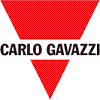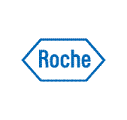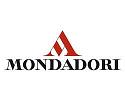Risk Analysis
Accredited Consulting Service for Dr. Magnoni MA BBA Accredited Executive Consultant (AEC)
Executive Summary Video
The Appleton Greene Accredited Consultant Service (ACS) for Risk Analysis is provided by Dr. Magnoni and provides clients with four cost-effective and time-effective professional consultant solutions, enabling clients to engage professional support over a sustainable period of time, while being able to manage consultancy costs within a clearly defined monthly budget. All service contracts are for a fixed period of 12 months and are renewable annually by mutual agreement. Services can be upgraded at any time, subject to individual client requirements and consulting service availability. If you would like to place an order for the Appleton Greene Risk Analysis service, please click on either the Bronze, Silver, Gold, or Platinum service boxes below in order to access the respective application forms. A detailed information guide for this service is provided below and you can access this guide by scrolling down and clicking on the tabs beneath the service order application forms.
Bronze Client Service
Monthly cost: USD $1,000.00
Time limit: 5 hours per month
Contract period: 12 months
SERVICE FEATURES
Bronze service includes:
01. Email support
02. Telephone support
03. Questions & answers
04. Professional advice
05. Communication management
To apply – CLICK HERE

Silver Client Service
Monthly cost: USD $2,000.00
Time limit: 10 hours per month
Contract period: 12 months
SERVICE FEATURES
Bronze service plus
01. Research analysis
02. Management analysis
03. Performance analysis
04. Business process analysis
05. Training analysis
To apply – CLICK HERE
Gold Client Service
Monthly cost: USD $3,000.00
Time limit: 15 hours per month
Contract period: 12 months
SERVICE FEATURES
Bronze/Silver service plus
01. Management interviews
02. Evaluation and assessment
03. Performance improvement
04. Business process improvement
05. Management training
To apply – CLICK HERE
Consultant profile
Dr Magnoni is an approved Executive Consultant at Appleton Greene and he has experience in management, production and finance. He has achieved a Master in Organization’s Management, an Executive Master in Corporate Social Responsibility and a Bachelor of Economics. He has industry experience within the following sectors: Construction; Consultancy; Oil & Gas; Manufacturing and Energy. He has had commercial experience within the following countries: Italy; United Kingdom; France and Switzerland, or more specifically within the following cities: Milan; Rome; London; Paris and Zurich. His service skills incorporate: accounting; business management; CSR management; sustainability reporting and HSE management.
To request further information about Dr. Magnoni through Appleton Greene, please CLICK HERE.

Executive summary
Risk Analysis
The consultancy service is a professional work performance of a person who, having ascertained and practical experience in business management systems, advises and assists its customers in the performance of acts, provides information and advice. The term “management system” means all those organizational models implemented in organizations (for example: Company and companies) in the various sectors in which they operate (for example: Manufacturing, food, services and construction). With reference to the requirements expressed by a series of international standards, including: – ISO 9001 for Quality Management Systems; – ISO 14001 for environmental management systems; – OHSAS 18001 for safety management systems and health in the workplace.
The task of the consultant is therefore, once acquired the items that the customer already has, to add the factors of competence, knowledge and professionalism that can promote developments in the desired direction; in this context is substantially the relationship of trust between the customer and who provides advice. Handle all the counseling path, from first contact to after certification with the main objective of creating added value for customers through customized projects and solutions. The introduction in the company of an effective management system, designed and implemented to measure, is a winning investment to manage the complexity ensuring a continuous improvement of performance and the satisfaction of all parties concerned. The consulting activity focuses on all areas of risk that are relevant in terms of continuity of production (process risks, risks of utilities, risks from suppliers, risks due to the automation of processes, risks of customers, risks due transport and logistics) and aims to highlight the critical customer scenarios, estimating the consequences.
Service Methodology
Implementation of quality systems based on concepts of business improvement. Analyze and plan activities together with the client, according to needs, objectives and policies, different from company to company, monitoring the operation of what was planned and collecting evidence for the establishment of a process for continuous improvement. Elements of the process considered are: setting the context of the risk assessment (identification, analysis, increase) of the risk treatment across which we highlight the following activities: communication and consultation, monitoring and review. The consulting activity focuses on all areas of risk that are relevant in terms of continuity of production (process risks, risks of utilities, risks from suppliers, risks due to the automation of processes, risks of customers, risks due transport and logistics) and aims to highlight the critical customer scenarios, estimating the consequences>/p>
Our method involves the following general stages: Definition of customer needs through a thorough check up and free development of a project; Analysis of business processes and designing intervention detail (Work Plan); Design of the structure of the organizational system; Development of the documentation provided; individual meetings and group analysis, training and consulting; Checks, re-examinations and continuous assessment of the occupational progress also by the customer; Continuous monitoring of customer satisfaction; Internal audit. The Internal Audit is an independent activity and objective assurance and consultancy, aimed at improving the effectiveness and efficiency Organization; Assistance during the certification process (if any) with research and management of the certification body / notified and Support post Certification with flexible maintenance interventions.
Service Options
Companies can elect whether they just require Appleton Greene for advice and support with the Bronze Client Service, for research and performance analysis with the Silver Client Service, for facilitating departmental workshops with the Gold Client Service, or for complete process planning, development, implementation, management and review, with the Platinum Client Service. Ultimately, there is a service to suit every situation and every budget and clients can elect to either upgrade or downgrade from one service to another as and when required, providing complete flexibility in order to ensure that the right level of support is available over a sustainable period of time, enabling the organization to compensate for any prescriptive or emergent changes relating to: Customer Service; E-business; Finance; Globalization; Human Resources; Information Technology; Legal; Management; Marketing; or Production.
Service Mission
We assist our customers by offering our advice for the development and implementation of business management systems useful to monitor and improve work performance, according to regulations and international standards. Our mission is to make available its expertise as a support to companies that want to implement within them of certifiable management systems in the following areas: Quality, Environment and Safety – management systems according to international standards. Handle all the counseling path, from first contact to after certification with the main objective of creating added value for customers through customized projects and solutions. We want to create value for the long term, promote the growth, efficiency and the prevention and management of business risks, taking into constant consideration the Organization’s interests.
We believe that improving the competitiveness of every business goes through process efficiency, training and motivation of staff, the use of effective information systems and the application of shared procedures for the control of all activities. All projects are conducted in order to obtain the customer’s objectives, both in terms of effectiveness and in terms of efficiency. Maintain an effective system of communication with customers, the community and all staff in order to transpose its requirements by informing them about the process of continuous improvement and about the results achieved. Guarantee efficiency in the management and control of operating units through the ability in management control and the systematic control of operating activities and the related costs to the Directorate by providing an effective and timely reporting on operations.

Service objectives
The following list represents the Key Service Objectives (KSO) for the Appleton Greene Risk Analysis service.
- Legal Assessment
This process involves to: improve the company’s governance system; organize a structured and organic prevention and control aimed at reducing the risk of commission of related crimes business activities, with particular regard to the elimination or reduction any unlawful behavior; determine all those who operate in the name and on behalf of the company in “areas at risk”, the confidence to run in to infringements of the provisions, in an offense punishable by penalties, on legal or administrative nature, not only personally but also in the towards the company. Legal assessment includes the following activities: identification of activities of the business areas exposed to the committee a more offenses (risk analysis); the definition of appropriate procedures for the prevention of offenses (Control protocols) and the effective monitoring of the process operation. Risk Analysis – The risk analysis is done by analyzing business processes in order to identify areas and activities where it is possible to commit the offenses and measuring, for each of them, the level of risk (in terms of “probability” and “impact”). This activity of “risk assessment”, risk assessment, focuses on the corporate structure, the specific business risks and internal regulatory system entity (company procedures). The risks are identified through a structured process of risk assessment (Risk assessment), generally carried out by means of: interviewing managers; workshop with the resources of one or more business functions and surveys. In performing this preliminary analysis assumes a fundamental role the Internal Audit. The Internal Audit is an independent activity and objective assurance and consultancy, aimed at improving the effectiveness and efficiency Organization. We assist the organization in pursuit of its objectives through a systematic professional approach that generates value added since it is aimed at evaluating and improving the control processes, risk management and corporate governance. This function can support the Supervisory Board in the operation of the process verification, checking the design and operation of parking control protocols in place to mitigate the risk of committing crimes. - Risk Evaluation
The objective of risk management is to understand what and how to prevent in relation to possible cases of damage, but also what and how to mitigate in terms of consequences and what to possibly transfer to other entities by means of, for example, appropriate insurance coverage. Identify, analyze, evaluate, communicate, monitor and eliminate the risks associated with any activity, or process in order to make the organization able to minimize losses and maximize opportunities. All this in a perspective of business continuity, that continuity of the production process or service delivery. Elements of the process considered are: setting the context of the risk assessment (identification, analysis, increase) of the risk treatment across which we highlight the following activities: communication and consultation, monitoring and review. Establish the context and politics (external context: social, cultural, political, cogent, financial, technology, internal context: governance, organizational structure, responsibilities, policies, information systems and flows; for risk management policy). Risk Identification (sources of risk, impact areas, events, circumstances, consequences, goal and full list of events that may affect the achievement of objectives). Analysis and risk weight; the analysis (determination of the consequences and attributes as the verisimilitude) provides inputs to the phase weighting, as the level of risk. Increase: comparison between the level of risk and risk criteria. Risk Treatment: deciding not to start or continue activities that result in the onset of risk; hiring or increase the risk in order to pursue an opportunity; remove the source of risk; to change the probability; edit their consequences; share the risk with other / and part / s (including financial control) and to consider the risk by informed decision. - Quality Implementation
The implementation of the management system for quality plans a project of organization and training that must permeate the structure in all its parts, with the objective of defining the processes aimed at continually improving and optimizing the efficiency. The project follows the following steps: Verify the organization and the existing documentation; Definition of quality policy and objectives; Definition and preparation of quality documents; Risk assessment; Audit Verification and Assistance during the Inspection Visit. During the first operation will be carried out a detailed verification of the organizational status and will define the objectives and stakeholders. This phase involves the actual analysis of the organization and the collection of all the existing documentation (possible forms and operating instructions) on the subject of the certification processes. This in order to check the current state of the art and to manage the integration with the quality system that must be implemented and with the documentation to be drawn. At each stage, and especially in the initial phase, it will be essential that the involvement of both the direction of the function managers, coordinated by the consultant, to define what the norm called “quality policy”, namely the objectives that the Company intends to pursue, to meet the needs of customers, external / internal. Risk assessment plans to identify, analyze, evaluate, communicate, monitor and eliminate the risks associated with any activity, or process in order to make the organization able to minimize losses and maximize opportunities. It must necessarily be an ongoing process aimed at improving since, over time, external factors or internal risk may change and should include an estimate of the costs of risk management, in terms of economic resources, capacity and means. The next step in setting the objectives will be to detect processes, responsibilities by assigning specific tasks and responsibilities. In this phase it will be crucial the involvement of both the function Officers that their collaborators, coordinated by a consultant, to obtain maximum involvement and dissemination of the Quality System. In order to verify the correct and full implementation of the quality system set up during the last month of the project, before by the inspection of the chosen certification, it will be carried out thorough auditing activities on all subjects to the certification process. - Environmental Implementation
Initial Environmental Assessment that identifies the significant environmental aspects typical of every company. The Environmental Analysis allows to: Identify the legal requirements applicable to an organization; Identify all environmental aspects with a significant environmental impact; Locate the appropriate criteria for evaluating the environmental impacts; Review all existing management practices and procedures relating to the environment and Evaluate the teaching from the investigation of previous incidents and environmental emergencies. The Environmental Analysis is designed to identify: the direct and indirect aspects (environmental aspect: element of an activity, product or service of an organization that can interact with the environment) and the significant impacts (environmental impact: any change to the environment, whether adverse or beneficial, wholly or partially resulting from activities, products or services of an organization). The Environmental Analysis is the tool that allows the organization to: Acquire a complete knowledge, thorough and documented related environmental aspects of its activities, its products and services; find out what are the most significant environmental aspects and the environmental performance indicators by which to measure the environmental performance; the realization of a control system with instruments such as procedures and control plans; support and assistance in the implementation of the environmental system; monitoring of activities and internal audit for the verification of the proper functioning. A systematic check carried out by the internal audit is to minimize the risks, to provide assurance to stakeholders (shareholders, employees, management, customers) and to define clear priorities for action to achieve compliance, for risk reduction and for the process improvement and periodic definition of improvement plans. - SS Implementation
Occupational Health and Safety Assessment Series allows the business issues related to security management, through the identification of hazards, assessment of risks and their reduction. A continuous improvement plan allows the identification and subsequent implementation of control measures. The consulting services to obtain OHSAS 18001 certification enables you to create an “active prevention” corporate policy that allows you to: Ensure compliance with legal requirements; Ensure the company an advantage in participating in tenders by public or private entities; Reduce workplace accidents both in terms of frequency and in terms of severity and the related costs “indirect”; Reduce the possibility of incurring administrative sanctions and / or criminal proceedings; Reduce image risks from accidents at work; Increase employee motivation and thus the working efficiency; Continuously monitor and verify safe working conditions and Design and implement an integrated system for quality, environment and safety. This process Involves: Definition of the SSL policy; Formulation of a plan for the introduction and development of a SSL management system; Drafting of the full SSL Manual of the procedures required by the regulations; Organization of a registration system; Specific personnel training than is the policy; System implementation and testing agreed through internal audits; Planning and development of corrective measures applications; Selection of the certification and Tiling constant during audits to ensure a technical support to the customer. The benefits derived from it are the bureaucratic / administrative simplifications, decision support in investment operations or technological change, greater protection of company assets and a better image towards its customers.

Achievements
Carlo Gavazzi S.p.A.
Our customers appreciate our experience and specialist knowledge of the sector, thanks to which we can identify the key operational and performance issues. The relationship with the company has been very positive. The consulting activity has allowed us to achieve certification in the best way. We were looked after every step of the project within the planned agreements. With a very detailed risk analysis it has been possible to determine the risks associated with certain hazards or risk sources. Depending on the extent of the risk so determined they have been defined, implemented and monitored for eradication programs or risk reduction. One of the changes following to our consultancy has been the 7.8% solid growth in sales of the energy management range due to the continuous effort in business development and the evolution of new products for key applications such as energy monitoring data centers and telecommunications power stations.
Eni S.p.A.
Eni continues to maintain high levels of attention to the safety of all activities also thanks to the continuous HSE awareness campaigns. Greenhouse gas emissions are down by 2.8% compared to the comparative year (-3.9% flaring emissions). The continuous energy efficiency measures, streamlining the logistics and emission reduction projects more than offset the effects of the growth in production. In addition, the gas flaring reduction program on the M’Boundi field (Eni 83%, operator), launched in 2014, received the Excellence Award in 2015 by the World Bank Global Gas Flaring Reduction as part of the Zero Gas Flaring Routine 2030 in view of the significant contribution to reducing emissions.
Coca Cola HBC Italia
Coca-Cola HBC Italy production of beverages overall increased by 1.7% on 2014, while the bottling of mineral water increased by 3.4% compared to 2014. Ingredients and packaging materials in direct contact with the drinks (primary packaging) are subjected to a thorough evaluation from the point of view of environmental impact and safety of consumers, before entering the production process. In particular, manufacturers are undergoing an audit process carried out directly by The Coca-Cola Company in accordance with very strict parameters. Coca-Cola HBC Italy also performs on such a materials testing protocol within the plants in order to assess their quality performance before authorizing any use; all manufacturers must provide appropriate documentation of compliance with all applicable laws (National and Community): Only in the face of this compliance, the company proceeds to the authorization of the use of these raw materials.
Roche Diagnostics S.p.A.
Roche seeks to balance the -company factors, environment and economy – in every aspect of its business management through: responsible management of the business, sustainable business growth and creating rewarding and quality jobs, access to the products guarantee by of those who need it, consideration of employees and guarantee their safety, reduce environmental impact and of the products and operations costs, supporting local communities through initiatives on the territory and by fostering innovation in science and the arts. The consulting activity has allowed us to achieve certification in the best way. We were looked after every step of the project within the planned agreements.
Arnoldo Mondadori Editori
A year earlier than expected, Mondadori was able to bring in active accounts of all its activities, provided that it was considered essential to ensure the next stage of investment and development. This positive contingency has been achieved with the creation of a business model based on three areas – books, retail and magazine – whose implementation has increased the availability of financial resources useful to support the strategies of the Group and its competitive position in core business. As part of an extended responsibility towards its customers, Mondadori is increasingly seeking to take over the management of finished products from external suppliers.
More detailed achievements, references and testimonials are confidentially available to clients upon request.

Industries
This service is primarily available to the following industry sectors:
Energy
Due diligence and risk analysis are consulting processes aimed at identifying the possible impacts arising out of activities in the sights. Identify, analyze, evaluate, communicate, monitor and eliminate the risks associated with any activity, or process in order to make the organization able to minimize losses and maximize opportunities. Conserve natural resources and protect the environment is a common concern today among consumers and businesses. In addition, the demand for environmentally friendly fuel continues to grow. For this, the use of alternative fuels such as biomass and biofuels is spreading. These new sources of energy is required to comply with the sustainability requirements. Even for traditional sources, the energy sector is facing a complex technological challenge that will require significant investment in infrastructure. Dynamism, ideas and a strong commitment aimed at sharing economy characterize the ecosystems of these new entrepreneurial projects that decide to operate in the energy sector. Specifically, 88% of startups (392 in total) carries out activities and provides scientific research and development services, while 27 (6%) are concerned with the manufacture of electrical and electronic equipment, 5% (equivalent to 21 initiatives entrepreneurial) operates in the construction of various equipment and machinery. Finally, there are four energy startups (1% of the total) who build and sell motor vehicles, trailers and semi-trailers. Producing energy from renewable energy and efficiency are two of the areas in which they move young companies in the energy sector that are born and work in Italy. Often the services they offer on the market can be integrated with the offer of the largest companies.
Construction
The positive signs, albeit modest, in the economy act still does not involve the construction sector continues to show declines in production levels though more slowly. The estimate made by Ance for 2015 is still a reduction in investment in construction by 1.3% in real terms, after significant declines in previous years (-7% in 2013 and -5.2% in 2014). The number of people employed in construction, after 19 consecutive quarters of declines trend, shows, in the second quarter 2015, an increase of 2.3% on the basis annually. The decline in construction investment in 2015, lower than in previous years, was mitigated by the extension until December 2015 the enhancement of tax incentives for building renovations and for energy efficiency (provided for by the 2015 Stability Law). Added to this are a number of measures relating to public works which, though not enough to reverse the cycle, they mitigate, however, already in 2015, the downturn. Identify, analyze, evaluate, communicate, monitor and eliminate the risks associated with any activity, or process in order to make the organization able to minimize losses and maximize opportunities. An approach extended to business continuity management company that identifies of accident scenarios involving critical business processes, you get to define strategies, organizational controls and emergency measures to be put in place to ensure the level of continuity, set a target. We assist our customers by offering our advice for the development and implementation of business management systems useful to monitor and improve work performance, according to regulations and international standards. We assist our customers by offering our advice for the development and implementation of business management systems useful to monitor and improve work performance, according to regulations and international standards.
Automotive
The automotive industry plays an extremely important role in world economy and the international economy, since it deals with the design, construction and marketing of motor vehicles, used every day around the world. As a result, vacancies in Italy are continuous, endless and very appealing. The automotive sector can be a turning point, both economically and professionally, for those who have decided to make available their skills and their will to contribute personally to the development of an important branch of industry. Salaries, in fact, are very high and working conditions are among the best on the market. Working in the automotive sector, also it can give you great personal satisfaction, because its achievements have great importance both nationally and globally. Innovation and research are important points of the automotive sector, and are also the basis of this type of industry. This is why large companies are always looking for promising young researchers. The working environment in which these professionals work is very interesting and offers many opportunities to make a career, even in a short period; in several large multinationals, in fact, there are various possibilities for placement offered by major car manufacturers. The consulting activity focuses on all areas of risk that are relevant in terms of continuity of production (process risks, risks of utilities, risks from suppliers, risks due to the automation of processes, risks of customers, risks due transport and logistics) and aims to highlight the critical customer scenarios, estimating the consequences. n approach extended to business continuity management company that identifies of accident scenarios involving critical business processes, you get to define strategies, organizational controls and emergency measures to be put in place to ensure the level of continuity set a target.
Oil & Gas
Our global and industry expertise extends on a wide range of sectors. We aim to offer companies advisory services for the development and conduct of due diligence and risk analysis relating to production sites belonging to different industrial sectors (Energy, Construction, Automotive, Oil & Gas and Food & Beverage), commercial activities, as well as disposal sites located throughout the world. Due diligence and risk analysis are consulting processes aimed at identifying the possible impacts arising out of activities in the sights. Identify, analyze, evaluate, communicate, monitor and eliminate the risks associated with any activity, or process in order to make the organization able to minimize losses and maximize opportunities. An approach extended to business continuity management company that identifies of accident scenarios involving critical business processes, you get to define strategies, organizational controls and emergency measures to be put in place to ensure the level of continuity set a target.With increasing global demand for energy and an economic scenario evolving, the oil and gas industry is facing new challenges and opportunities. Our team of specialists provides assistance to companies in the sector in risk management, performance optimization and compliance with the regulatory environment. The consulting activity focuses on all areas of risk that are relevant in terms of continuity of production (process risks, risks of utilities, risks from suppliers, risks due to the automation of processes, risks of customers, risks due transport and logistics) and aims to highlight the critical customer scenarios, estimating the consequences. Our network of professionals engaged in the oil and gas industry, is able to provide support on key issues, including: Risk management in an energy landscape in constant evolution; The M & A activity and investment; Reduction of costs and optimization of processes; The growth of emerging markets and Regulatory updates.
Food & Beverage
This field deals with the processing and transformation of products from primary activities such as agriculture, livestock, forestry and fishing or secondly, the blanks obtained as mentioned, to make finished products to be allocated, in the face of a proper conditioning / packaging, market, and therefore consumer, food. The main activities for this sector are: Standardized series productions; presence of handling systems and automated internal transport; use of machines, or simply by mechanical systems, connected together to form production lines and subdivision of the business in specific tasks such as administration, purchasing, maintenance, operation of plants, control, marketing. We believe that improving the competitiveness of every business goes through process efficiency, training and motivation of staff, the use of effective information systems and the application of shared procedures for the control of all activities. All projects are conducted in order to obtain the customer’s objectives, both in terms of effectiveness and in terms of efficiency. Maintain an effective system of communication with customers, the community and all staff in order to transpose its requirements by informing them about the process of continuous improvement and about the results achieved. Guarantee efficiency in the management and control of operating units through the ability in management control and the systematic control of operating activities and the related costs to the Directorate by providing an effective and timely reporting on operations.
Locations
This service is primarily available within the following locations:
Milan IT
The Milan metropolitan area is part of one of the richest regions of Europe and is an aggregation in which income levels are particularly high in any international comparison. The Milan success has been determined by three key factors. The first is due to the adequacy of the production structure, which has proved compatible with the development processes that have characterized the Italian and European economy. The second element consists of the national policies, properly articulated in different historical stages, have been able to promote the growth of Italy as a whole and, more specifically, of the most advanced areas of northern Italy. Finally, administrative intervention, activating local services of reasonably high quality, helped to create the conditions for a significant economic and social development. Among the basic functions of the Metropolitan City of Milan is the promotion and coordination of economic and social development. Activities related to economic development mainly aims to support sustainable growth, improve the productivity of businesses and the attractiveness of the territory. The principal objectives of sector can be grouped into four main areas: Strengthening competitiveness ‘companies and territory; Support excellence and talent; Develop attractiveness of the territory and Increasing the start-up innovative. For the metropolitan city is a strategic action on strengthening the quality dimension of the territorial contexts, as a condition of development and competitiveness aimed to consider the area a place where innovative productive relationships live, develop and nurture a system capable of meeting the challenges of globalization. The Sector Economic and Social Development of City Underground Milano has the ambitious goal to strengthen and improve the competitiveness of the metropolitan companies, intends to achieve an integrated program that pursues the following purposes: to create a metropolis at the enterprise extent and value, specialize and internationalising entrepreneurship.
Geneva CH
The central city of the whole region in terms of economy, health, education, culture and transport, Geneva’s mall, bank, industrial, intellectual and university extends far south-west of Lake Geneva. The city of Geneva is a center for business and financial center of international importance. A large number of Swiss banks based in Geneva, particularly those operating in the area of private banking. The service industry is very important for Geneva, where there are many corporate headquarters, as well as many international organizations such as the United Nations. Agriculture is common in the surroundings of Geneva, especially as regards the flour and wine production. The Sector Economic and Social Development of City Underground Geneva has the ambitious goal to strengthen and improve the competitiveness of the metropolitan companies, intends to achieve an integrated program that pursues the following purposes: to create a metropolis at the enterprise extent and value, specialize and internationalising entrepreneurship. Geneva drinking water, natural gas and electricity are supplied by the Industrial Services of Geneva (SIG). The 80% of the water is extracted from Lake Geneva, and 20% from a water table came from Arve infiltration. 30% of electricity is produced locally from some dams on the Rhône which produce hydropower (dams: Seujet, Verbois and Chancy-Pougny), or by the heat produced by the combustion of household waste at the facility Cheneviers. The remaining 70% is imported from other cantons in Switzerland or other European countries. The SIG purchase only electricity produced by renewable energy sources.
Rome IT
The city is the center of many financial institutions (banks and insurance), the television production centers, companies operating in the fashion and advertising and especially the film industry. Rome is also home to a number of international agencies of the United Nations, such as the World Food Programme (WFP), the United Nations Food and Agriculture Organization (FAO), and the International Fund for Agricultural Development (IFAD); the city is home to the NATO Defense College. Rome is the first town in Italy for total gross domestic product, and one of the first major cities to per capita income, and here focuses much of the economic activities and employment in Lazio. Absolute, Rome is the 95th common for average taxable income per capita stated in 2014, with 24 555 euro. The province of Rome in Italy has the greatest amount of the active population (1.9 million) and employed (almost 1.7 million), but a participation rate lower than that of the metropolitan provinces of the center-north (out of 100 people working age, in fact, in Rome, only 67 are working or looking for work), and an unemployment rate slightly below the national average (11.3% in 2013). In Rome there is a strong industrial concern medium and small to medium businesses, which developed around several poles of development, like the so called Tiburtina Valley or the area just beyond the ring road along the Via Tiburtina or Acilia.
Paris FR
Paris is the fifth most populous municipality in the European Union and, in view of the municipal area, has one of the highest population densities in the world. The city is located on a bend of the Seine, very favorable position because fundamental hub of transport and traffic on the European continent. Paris is not specialized in a particular field (such as Los Angeles with entertainment industries or London and New York with the financial sector). In recent years the city’s economy has shifted to high value-added activities, such as financial services, information technology and production of high tech electronics, optics and aerospace. The city is also very strong in terms of production, in particular in the automotive industry, aeronautics and electronics. In recent decades, the local economy has shifted towards high value-added activities, in particular with business services. Paris is the first in Europe in terms of research and development capabilities and is considered one of the best cities in the world with regard to innovation. consider the area a place where innovative productive relationships live, develop and nurture a system capable of meeting the challenges of globalization. The Paris metropolitan area is part of one of the richest regions of Europe and is an aggregation in which income levels are particularly high in any international comparison.
London UK
In London there are located numerous institutions, organizations and international companies. There are important museums, theaters and concert halls; the city contains four World Heritage Sites. In addition, there is permanently held the monarch of the United Kingdom presiding in Buckingham Palace and the parliament; Prime Minister lives in the home at 10 Downing Street. For all the listed characteristics, London took the title of Global City. London is considered one of the city driving the world economy, along with New York and Tokyo. According to the Global Financial Centres Index is the largest and most competitive financial center in the world. The City is the financial center of London, home to banks, brokers, insurance companies, law firms and accounting firms. A second financial district was developed in Canary Wharf with the head offices of banks such as HSBC and Barclays, Reuters news agency and Clifford Chance, the largest law firm in the world. The premises of the non-financial companies are scattered in the various districts of Central London. Some are in the City, but most are located in Mayfair, St. James’s, the Strand, or in other areas. More than half of the FTSE 100 index companies are based in Central London, and over 70% in the London subway. The British capital is also a leading world center for the provision of professional services, such as the media and advertising industry. Although the Port of London is now only the third in the United Kingdom in order of magnitude, and not the first in the world, as it once was, is still goods to 50 million tons per year. The major reservoirs are now at Tilbury, outside the boundaries of Greater London. London is considered one of the four world capitals of fashion, along with Milan, Paris and New York.
Clients
This service’s current clients or employers include:
Probiotical S.p.A.
Probiotical was founded in 1985 by the Microbiological Laboratory ALCE that, for more than sixty years, is the Italian leader in the production of lactic acid bacteria for the dairy industry. Probiotical S.p.A is part of Alce Mofin Group, a major enterprise and research, structured in five factories. Two of these are located in Novara, they are placed in the highly advanced research center and the probiotics production area. Another establishment, dedicated to the production of bioactive peptides, dyes, and natural flavors is located near Lodi, in Lombardy. Two other plants, including the town of Alce in Novara and that settled near Mantua, are dedicated to the production of rennet and of freeze-dried lactic acid bacteria for the dairy sector. All production facilities Probiotical S.p.A are designed to offer innovative products and high quality, able to meet different customer needs, being always a step ahead of the competition. Dr. John Mogna is the President of Probiotical. His is a legacy family collection with passion, skill and enthusiasm. His interest in research was born as a child, he watched the world under the microscope along with his father. Not surprisingly, the slogan of which wanted to build his own company philosophy is “Search”. A conviction so strong that choose to dedicate each year 10% of the resources. This has led the company to achieve more and more success, to consecrate the world leader in probiotics products, ahead of even the United States, with 60 patents in 60 years. Today Probiotical is a unique in its sector, as first factory to the world conceived and created exclusively for research, development and production of probiotic microorganisms.
Probiotical S.p.A. – Click Here
Carlo Gavazzi S.p.A.
Carlo Gavazzi is an internationally active electronics group designing, manufacturing and marketing electronic equipment targeted at the global markets of industrial automation. The holding company, headquartered in Switzerland, ensures planning and development of the Group’s business portfolio, to choose a coherent set of strategies and objectives, to monitor their implementation and the efficiency of the corresponding management tools and processes, to select the upper-level management, to manage corporate finance, controlling, tax planning, management information systems, communication and investor relations. The Automation Components Business Unit operates separately within the framework of defined strategies and objectives; it is responsible for research and development, manufacturing, quality, marketing and sales, human resources, logistics, finance and control. The CEO leads the business unit in line with the holding’s objectives with strong entrepreneurial drive and responsibility. Our objectives; To provide our customers with technologically innovative, high quality and competitive solutions, in compliance with their requirements and expectations; To create an environment conducive to our employees’ professional and personal development and To obtain a fair and equitable return for our shareholders through sustained development of our core activities. Our principles; To create added value for our customers with our products and services in order to strengthen their market positions and establishing long-term partnerships; To adapt structures and processes to market needs and delegate responsibility; To promote an environment conducive to mutual respect and cooperation and To mark clear leadership and integrity by doing what we say.
Carlo Gavazzi S.p.A. – Click Here
Eni S.p.A
We are a major integrated energy company, committed to growth in the activities of finding, producing, transporting, transforming and marketing oil and natural gas. All men and women of Eni have a passion for challenges, continuous improvement, excellence and particularly value people, the environment and integrity. How we work – Internationality, dialogue, integrated approach. On these pillars is based Eni daily activities around the world. We create sustainable value. We want to create value for the long term, promote the growth, efficiency and the prevention and management of business risks, taking into constant consideration the interests of all those who work with us and for us. Our activities are based on a business model that has brought us to an excellent strategic positioning and the acquisition of competitive advantages. The corporate governance system is a cornerstone of our business model: alongside the business strategy, aims to support the relationship of trust with those who work with us and to contribute to the achievement of business results, creating sustainable value in the long run. We are “energy solution” in the countries where we work. Eni wants to improve the conditions of access to energy in the countries in which it operates. The inspiration is that of the Mattei formula, which since the Sixties aimed to establish an equal relationship with producing countries oil, creating the basis of a model of economic development manager. The belief, initiated by the founder and still valid today, is to empower the producing countries from energy supply point of view, through the path of dialogue and of respect for cultures. We work in an increasingly broad scenario, the contact with different worlds and cultures is our everyday life. What we do is to create the system with the local people, contributing to the development of the territories in which we operate. Our commitment is realized through long-term agreements with the governments of the countries and local projects for the benefit of local communities, dialogue and involvement. For us, environmental protection is essential for sustainable development in the implementation of industrial projects and throughout the life cycle of our plants. We assess the environmental, social impacts, economic and cultural generated by our activities, including on indigenous peoples, guaranteeing mitigation and constantly putting into practice improvement processes. Being sustainable means for us to manage the risks and mitigate the impacts deriving from operating activities, creating added value for all.
Coca-Cola HBC Italia
Coca-Cola HBC Italy (where the name of 1995-2005 has started its activities in Italy in 1995 was Beverages Italy) Coca-Cola. In 2006, to expand its product portfolio, Coca-Cola HBC Italy, together with Coca-Cola Italy, entered in the mineral water industry by acquiring Fonti del Vulture. Based in Sesto San Giovanni (MI), Coca-Cola HBC Italy operates 4 bottling plants. The company employs more than 2,000 people, of which a large part in the sales force. Our objective is to become the partner of choice for the more than 160,000 customers who make our products available to consumers. Coca-Cola HBC AG operates in 28 countries, serving over 581 million people. The holding company of the group has its headquarters in Switzerland and is listed in the premium segment of the London Stock Exchange, as well as secondary listings in Athens Bags and New York. We manufacture, sell and distribute a wide range of beverages, most of which are trademark of The Coca-Cola Company. Our product portfolio includes, among others: the leading brands Coca-Cola, Coca-Cola Zero, Coca-Cola light, Fanta, Sprite, Powerade and Burn, local brands such as Amita juices and Lilia and Sveva waters, brands licensed by other companies such as Nestea and Illy issimo. We want our success to continue over time: for this reason, it is important to reduce our environmental footprint and contribute to the quality of life in the communities in which we operate. In light of the increasing number of challenges relating to sustainability, we decided to dedicate a series of priority activities for our business and our stakeholders in the following areas: Preservation of water; Energy and climate protection; Packaging and recycling; Consumer Health; Professional Development; Ethical our suppliers and Support to communities in which we operate.
Coca-Cola HBC Italia – Click Here
Mondadori Editore
The Mondadori Group is one of the top publishing companies in Europe. It is Italy’s biggest book and magazine publisher and the third largest in the consumer magazine segment in France. Mondadori’s activities also include retailing, with a network of more than 600 bookstores throughout the country. The Group is the absolute leader in Italy’s book market, operating through publishing houses including Edizioni Mondadori, Einaudi, Piemme, Sperling & Kupfer and Electa. On top of that, in April 2016, the Company has completed the acquisition of RCS Libri strengthening its competitive position on the Italian trade and education books market, and on the international illustrated books market. In magazines, Mondadori publishes some of Italy’s most-read and well-known titles, including Panorama, the country’s first ever news weekly; Grazia, Italy’s first women’s magazine – now distributed internationally; some of the country’s top-selling titles such as Donna Moderna, Chi, TuStyle and TV Sorrisi e Canzoni; and Casabella, Italy’s first and most prestigious magazine on architecture. Mondadori France publishes the weekly Closer, the top-seller among women’s titles. Mondadori also operates internationally thanks to a network of partners. The Mondadori Group employs 3,076 people and in 2015 generated 1.122 billion euros in sales. Marina Berlusconi is chairman of the company as of February 2003 and since October 2005 has been chairman of Fininvest S.p.A, the holding company that owns the 50.39% of Mondadori. Ernesto Mauri has been chief executive officer since March 2013. Arnoldo Mondadori Editore shares have been listed on the Milan stock exchange since 1982. Since its foundation in 1907, Mondadori’s mission has been to encourage the widest possible dissemination of culture and ideas with a product range that spans all genres and reaches all readers. After a century spent at the heart of Italian culture, the Mondadori Group is now undertaking a strategy of international expansion. Its aim is to use the main Mondadori magazine brands to export style and quality worldwide along with Italian excellence in fashion, design and cooking.
Mondadori Editore – Click Here

Benefits
Custmer Service
- Customer satisfaction
- Customer care
- Cost reduction
- Legal compliance
- Performance improvement
- Claim reduction
- Increasing sales
- Brand reputation
- Contact resolution
- Service improvement
Production
- Process optimization
- Improving quality
- Improving efficiency
- Time reduction
- Improving facilities
- Supplier control
- Increase innovation
- Energy reduction
- Cost reduction
- Increase productivity
Management
- Staff satisfaction
- Risk reduction
- Problem solving
- Credit access
- Increase skills
- Empowerment
- Team work
- Asset value
- Working relations
- Improving autonomy
Bronze Service
Monthly cost: USD $1,000.00
Time limit: 5 hours per month
Contract period: 12 months
Bronze service includes:
01. Email support
02. Telephone support
03. Questions & answers
04. Professional advice
05. Communication management
SERVICE DESCRIPTION
The Bronze Client Service (BCS) for Risk Analysis provides clients with an entry level option and enables client contacts to become personally acquainted with Dr. Magnoni over a sustainable period of time. We suggest that clients allocate up to a maximum of 5 Key Employees for this service. Your Key Employees can then contact the consultant via email, whenever they feel that they need specific advice or support in relation to the consultant’s specialist subject. The consultant will also be proactive about opening and maintaining communications with your Key Employees. Your Key Employees can list and number any questions that they would like to ask and they will then receive specific answers to each and every query that they may have. Your Key Employees can then retain these communications on file for future reference. General support inquiries will usually receive replies within 48 hours, but please allow a period of up to 10 business days during busy periods. The Bronze Client Service (BCS) enables your Key Employees to get to know their designated Appleton Greene consultant and to benefit from the consultant’s specialist skills, knowledge and experience.
Silver Service
Monthly cost: USD $2,000.00
Time limit: 10 hours per month
Contract period: 12 months
Bronze service plus
01. Research analysis
02. Management analysis
03. Performance analysis
04. Business process analysis
05. Training analysis
SERVICE DESCRIPTION
The Silver Client Service (SCS) for Risk Analysis provides more time for research and development. If you require Dr. Magnoni to undertake research on your behalf, or on behalf of your Key Employees, then this would understandably require more time and the Silver Client Service (SCS) accommodates this. For example, you may want your consultant to undertake some research into your management, performance, business, or training processes, with a view towards providing an independent analysis and recommendations for improvement. If any research and development, or business analysis is required, then the Silver Client Service (SCS) is for you.
Gold Service
Monthly cost: USD $3,000.00
Time limit: 15 hours per month
Contract period: 12 months
Bronze/Silver service plus
01. Management interviews
02. Evaluation and assessment
03. Performance improvement
04. Business process improvement
05. Management training
SERVICE DESCRIPTION
The Gold Client Service (GCS) for Risk Analysis is intended for more detailed evaluation and assessment, that may require your Key Employees to have monthly meetings or interviews with Dr. Magnoni. These meetings and interviews can be conducted over the telephone, Skype, or by video conference if required. The consultant can also attend your business premises, an Appleton Greene office, or another mutually beneficial location, but please note that clients are responsible for the costs of any disbursements separately, including travel and accommodation. This service enables you to integrate the specific skills, knowledge and experience of your designated consultant into your Key Employee management team. The Gold Client Service (GCS) can also incorporate training workshops, business presentations and external meetings with customers, suppliers, associations, or any other business-related stakeholders.
Platinum Service
Monthly cost: USD $4,000.00
Time limit: 20 hours per month
Contract period: 12 months
Bronze/Silver/Gold service plus
01. Project planning
02. Project development
03. Project implementation
04. Project management
05. Project review
SERVICE DESCRIPTION
The Platinum Client Service (PCS) for Risk Analysis is our flagship service and will be required if you need Dr. Magnoni to facilitate the planning, development, implementation, management, or review of a particular project relating to his specialist subject, which would obviously require more time and dedication. This service enables you to reserve up to 12.5% of the consultant’s working month and provides a more hands-on service as and when required. If you need more time than this, then this can always be arranged, subject of course to the consultant’s ongoing availability. The benefit of having an external consultant involved in projects is they provide an independent perspective and are not influenced by internal politics, day-to-day responsibilities, or personal career interest. They provide objectivity, specific knowledge, skills and experience and will be entirely focused upon the tasks at hand. The Platinum Client Service (PCS) will provide your organization with a valuable resource as and when you need it.






































